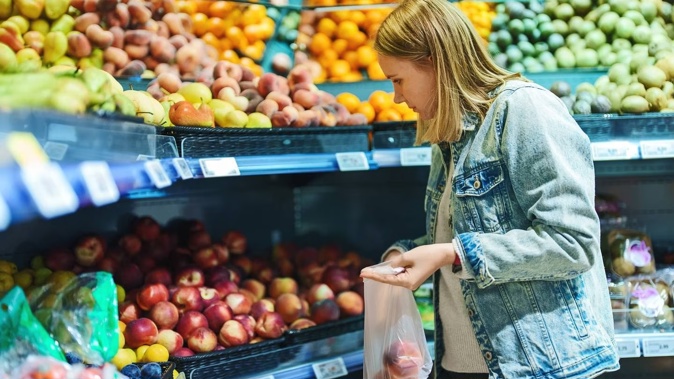
Food prices soared the most since 1989 in the year to February, with recent weather events pushing fruit and vegetables up 6 per cent in the last month alone.
Fruit and vegetables were the largest contributors to the monthly movement. Within this group, the items having the greatest impact were broccoli, tomatoes, and lettuce, StatsNZ said.
Overall food prices were 12 per cent higher in February 2023 than they were in February 2022, according to figures released by StatsNZ today.
Grocery food was the largest contributor to this movement across the full year.
“Increasing prices for a barn or cage-raised eggs, potato chips, and cheddar cheese were the largest drivers within grocery food,” consumer prices manager James Mitchell said.
The second-largest contributor to the annual movement was fruit and vegetables.
The biggest increases were seen in tomatoes (117 per cent increase) and in potatoes (48 per cent increase).
Fruit and vegetable prices increased by 23 per cent for the year. The broader grocery category was up 12 per cent.
Restaurant meals and ready-to-eat food prices increased by 8.4 per cent. Meat, poultry and fish prices increased by 9.8 per cent and non-alcoholic beverage prices increased by 9.1 per cent.
In February 2023, the annual increase was due to rises across all the broad food categories Stats NZ measures, compared with February 2022.
- ANZ economist: Food price inflation wasn't as high as predicted
- Cheese, chips and chooks: New data confirms soaring grocery bills
- Concerns weather disasters may drive food growers out of industry
The rises come as signs were emerging that overall inflation has peaked.
Annual CPI inflation was 7.2 per cent for the 2022 year.
Economists expect the recent storms will add fresh inflationary pressure, but they say the Reserve Bank should be able to look through short-term spikes to fruit and vegetable prices when it considers its interest rate outlook.
Take your Radio, Podcasts and Music with you









